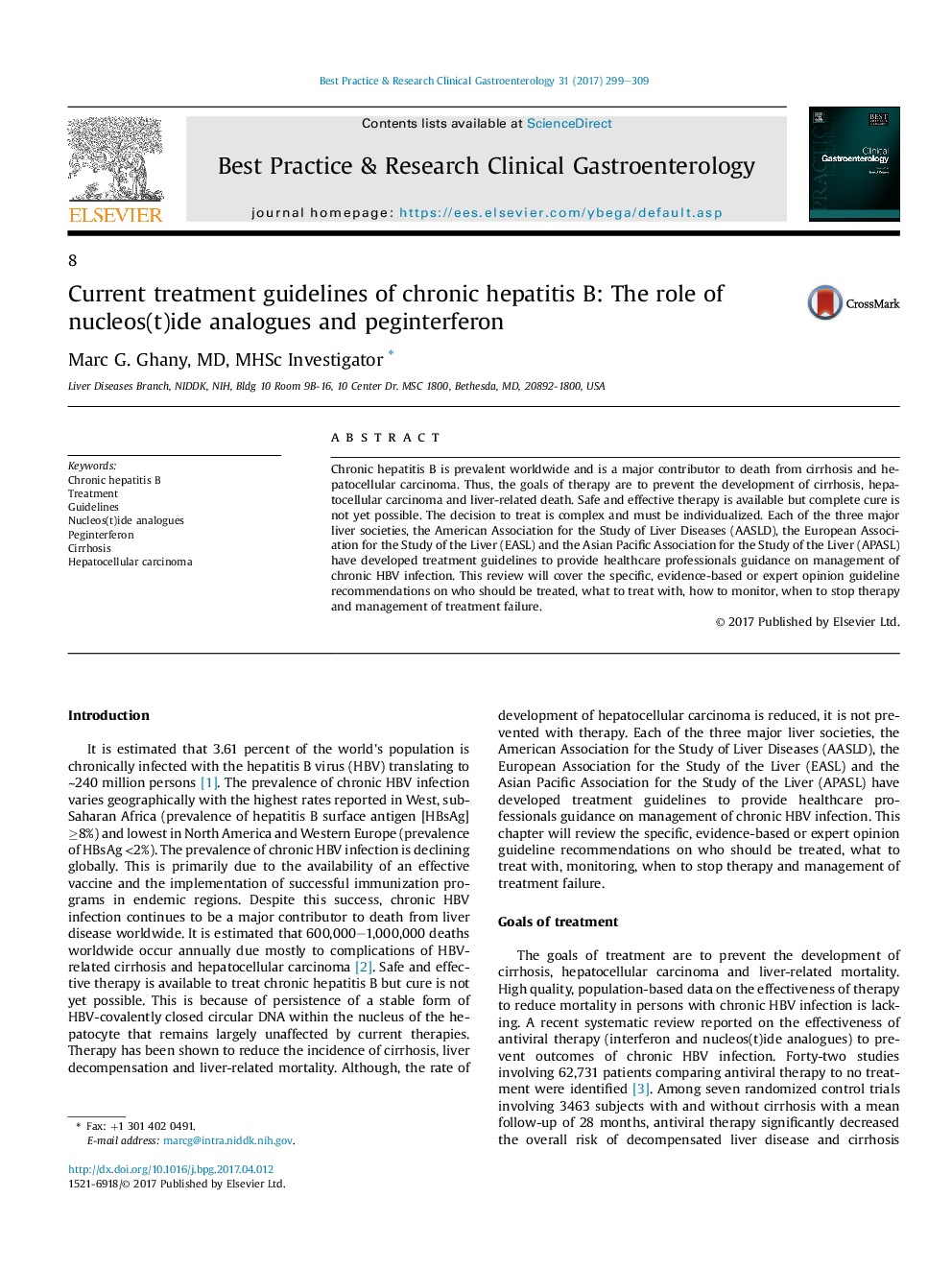| Article ID | Journal | Published Year | Pages | File Type |
|---|---|---|---|---|
| 5654498 | Best Practice & Research Clinical Gastroenterology | 2017 | 11 Pages |
Abstract
Chronic hepatitis B is prevalent worldwide and is a major contributor to death from cirrhosis and hepatocellular carcinoma. Thus, the goals of therapy are to prevent the development of cirrhosis, hepatocellular carcinoma and liver-related death. Safe and effective therapy is available but complete cure is not yet possible. The decision to treat is complex and must be individualized. Each of the three major liver societies, the American Association for the Study of Liver Diseases (AASLD), the European Association for the Study of the Liver (EASL) and the Asian Pacific Association for the Study of the Liver (APASL) have developed treatment guidelines to provide healthcare professionals guidance on management of chronic HBV infection. This review will cover the specific, evidence-based or expert opinion guideline recommendations on who should be treated, what to treat with, how to monitor, when to stop therapy and management of treatment failure.
Keywords
Related Topics
Health Sciences
Medicine and Dentistry
Endocrinology, Diabetes and Metabolism
Authors
Marc G. (Investigator),
